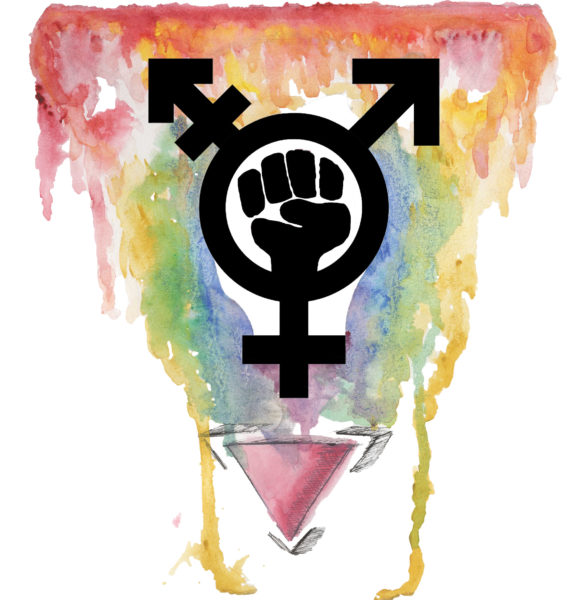Feminism Redefines Itself

Photo illustration by Sayedah Mosavi.
While the women’s rights and the LGBTQ+ movements continue to gain traction against President Donald Trump’s policies, I have observed that “feminism” is forging a new face.
The idea is broadening and becoming more integrationist as American society tackles the problems and prevalence of misogyny, which ingrained prejudice against women.
Now, being a feminist includes advocating for the equal treatment of LGBTQ+ people.
While undoing the effects of misogyny, we are beginning to see how our society is hyper-gendered and how this reflects the tendencies of a toxic masculine hierarchy.
Aspects that should simply be human are arbitrarily assigned a gender then associated with a biological sex.
Intelligence is gendered; emotions are gendered, clothes are gendered and even abilities are gendered.
There is neither an inherent gender nor an inherent biological sex to any of those traits or objects.
“Gender” is a social construct that depends on subjective attribution. It is beholden to the changes and whims of the people who construct society.
There is no actual reason to accept the ideas that men are more rational, that being vulnerable is feminine, that dancing is “girly,” that cooking is a woman’s job, or that sports and cars are a “man’s thing.”
Rationality, emotions, and personal tastes are reflections of the general human being. They neither reflect gender nor biological sex, but they do reflect the flexibility of a complex human mind.
In reality, that flexibility explains why women like Sheryl Sandberg have advanced in the business and technology industries, and why some fathers like Ben Affleck are choosing to become stay-at-home dads.
Misogyny does not accept the fluidity of a-gendered human commonalities.
Generally, it does not accept that rationality and emotions are common traits among human beings.
Specifically, it cannot stand the fact that men can wear makeup and that women can be in the military.
Misogyny is an egotistical parasite that seeks to perpetuate itself.
To survive, misogyny depends on the arbitrariness of gender binaries. It also depends on society’s acceptance of those binaries in order to establish a value hierarchy.
In our society — as in many other societies — seemingly “masculine” traits are valued more than the supposed feminine.
Masculinity is assigned to traits like bravery, logic, toughness and assertiveness.
These traits are sought and valued, especially in fields such as business, law, science and technology. These fields are also dominated by men.
Women were not thought to command those traits but their exact opposites like submissiveness, passivity, emotionality and weakness.
If a man is absent of the masculine qualities or displays a supposed feminine one, like emotion, he is derided as effeminate, or “gay.”
In the context of misogyny and the gender binary, women and LGBTQ+ people share in each other’s pain.
Both are oppressed because of misogyny.
Women experience misogyny simply for being women. Society assumes that women exhibit feminine traits, which are less appreciated.
Gay men experience misogyny, too. Homophobia is misdirected misogyny.
When homophobes use slurs to describe gay men, they regurgitate derogatory terms that are used to describe women.
For example, the term “faggot” has its roots in misogyny. The website Wordorigins.org explains that a faggot, which is literally a bundle of sticks to be carried, was thought to symbolize a burden.
The term was used against women before it was used to against gay men.
Transgender people share in similar pain as women.
Transgender men suffer under misogyny’s oppression because society once treated them as women and sometimes still do.
Transgender women experience transmisogyny, meaning their oppression and mistreatment is a cocktail of hate-related to their womanhood and trans-identity.
Their identities also cloud society’s conventional gender binary, a fluidity that is unacceptable to a misogynistic system.
Because of this shared pain, the character of feminism is evolving. Each group of individuals suffers under the caprice of the conventional gender binary.
The shared suffering is more poignant especially since misogyny uses the gender binary to establish its own value and prominence.
Today’s feminist movement understands the intersectionality of this shared pain and requires that those supporting women’s rights also support LGBTQ+ rights.
Feminism is no longer just about a single kind of woman, the kind defined by the gender binary. Feminism is broadening to defend anyone who has suffered under misogyny.
With feminism becoming more encompassing, we are beginning to realize that being a feminist is the key to addressing the hatred ingrained in society.



